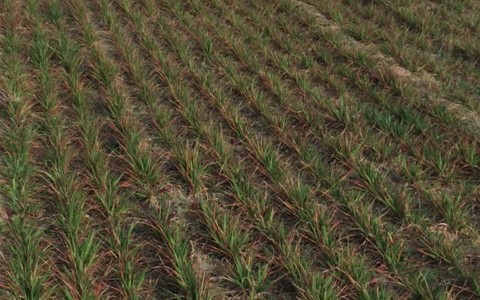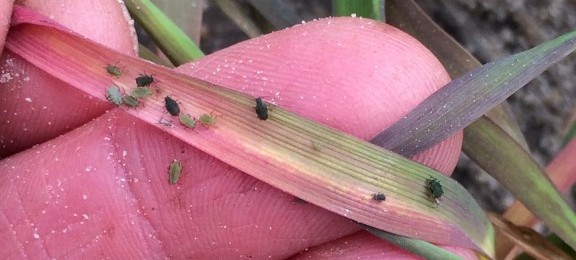Forages
-
Topics in This Newsletter: Nitrate considerations going into the fall (Dr. Lawton Stewart) We are getting closer to fall, and many producers are focused on their last cutting of hay. I wanted to send out a reminder of the importance of testing hay. This helps make nutritional decisions, but also it important to pay close attention…
-
Topics in this months newsletter on Forages and Livestock are the 2025 SE GA Cattle Update in Metter, Bermudagrass Stem Maggot, and Applying Rezilon for Winter Annuals Southeast GA Cattle Update at Georgia Grown Innovation Center, Metter, GA, – July 31st Cattle producers from across Southeast Georgia are encouraged to attend the Southeast Georgia Cattle…
-
It has rained almost everyday for the month of June. That has made hay production a headache to start the season off. Although, as areas have missed showers we have been timely and got out and baled some hay. Most everyone should be on their second cutting soon, but looking at the 10 day forecast…
Posted in: Forages -
Pecan orchards took a hard hit from Helene in Appling county. A third of the mature trees are down, at the least, and near to a quarter of the young trees did not fair to well either. Not only the tree themselves were roughened up but this years crop in Appling county has nearly been…
-
I want to share with you that Dr. Bob Stougaard, Professor in Department of Crop and Soil Sciences, is now serving as an Extension resource for weed management in forage systems. See below his short article he recently shared with county extension agents. In this article he encourages producers to scout their hay fields and…
-
The Master Cattlemen’s Program is being offered this fall in Newton County. The program is going to be offered by Zoom so anyone across the state can attend if they choose to participate. There is a $20 registration fee to attend by Zoom. The Master Cattlemen’s Program is an 8 week long program that meets…
-

I’ve looked at some oats in our area and received calls about fields turning a red to purple color. Reddening in oats can be the result of several unrelated actions. In most cases, the color expression is due to a group of sugar free pigments called anthocyanidins. According to Dr. Dewey Lee, when there is an increase in free sugars in…
Posted in: Forages -
From Dr. Dennis Hancock, UGA Forage Specialist: Because of the wet fall, many producers have faced extremely difficult field curing conditions for their hay. Additionally, hay that was bone dry in the field has, in many cases, developed mold problems in the barn. This later issue has been problematic for us in 2015, and it…
Posted in: Forages -

Hay producers, be sure to submit a forage sample for the 2015 Southeastern Hay Contest. Samples must be at the lab in Athens by September 28, so have the samples to our office by September 21. Farmers can submit more than one sample. Cost is $17. Categories are: Warm season perennial, Alfalfa, Perianal Peanut, Cool Season Perennial,…
Posted in: Forages -

I’ve looked at numerous small grains exhibiting leaves and tillers that have yellowed and are showing red/purple damage. These symptoms can be caused by many things, including nutrient deficiency, cold injury, and disease. But some (not all) of these cases have been barley yellow dwarf virus (BYD). BYD is vectored by aphids. Below is a little info on aphids…